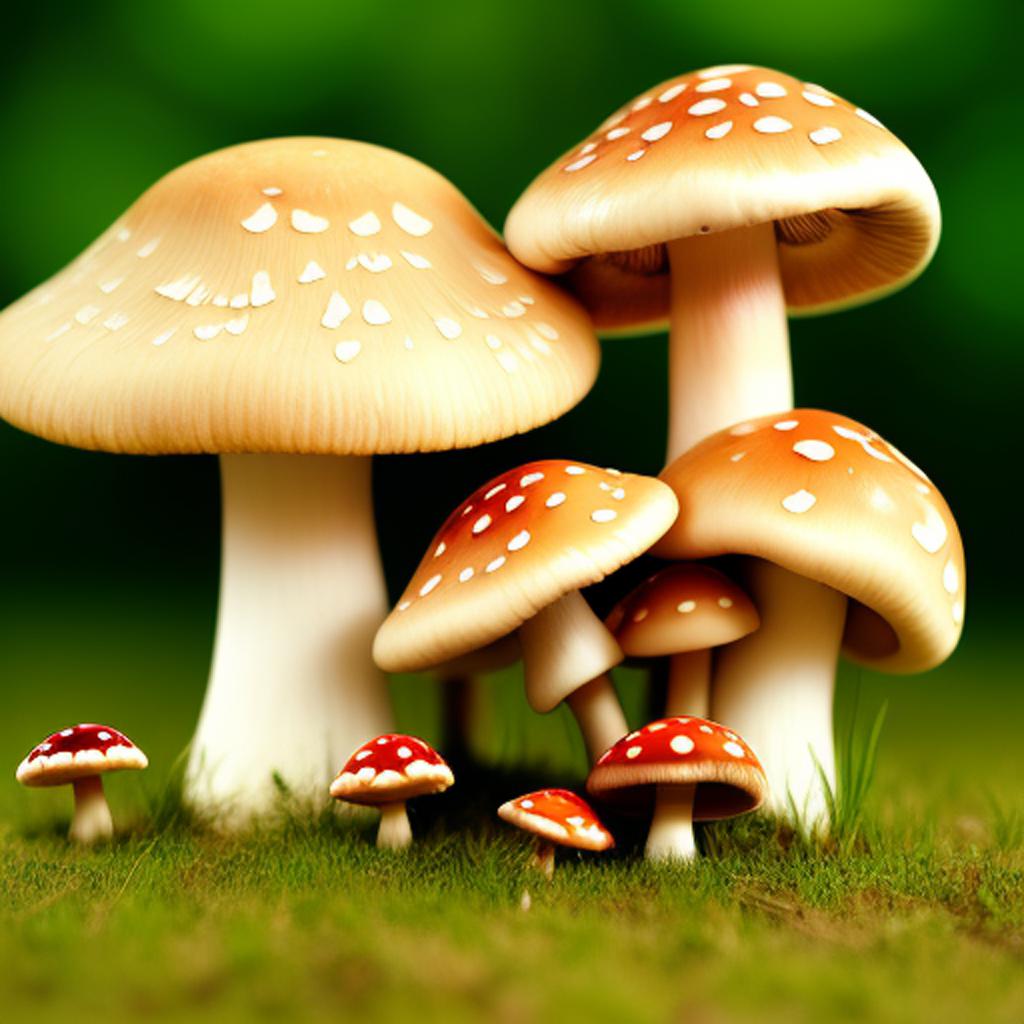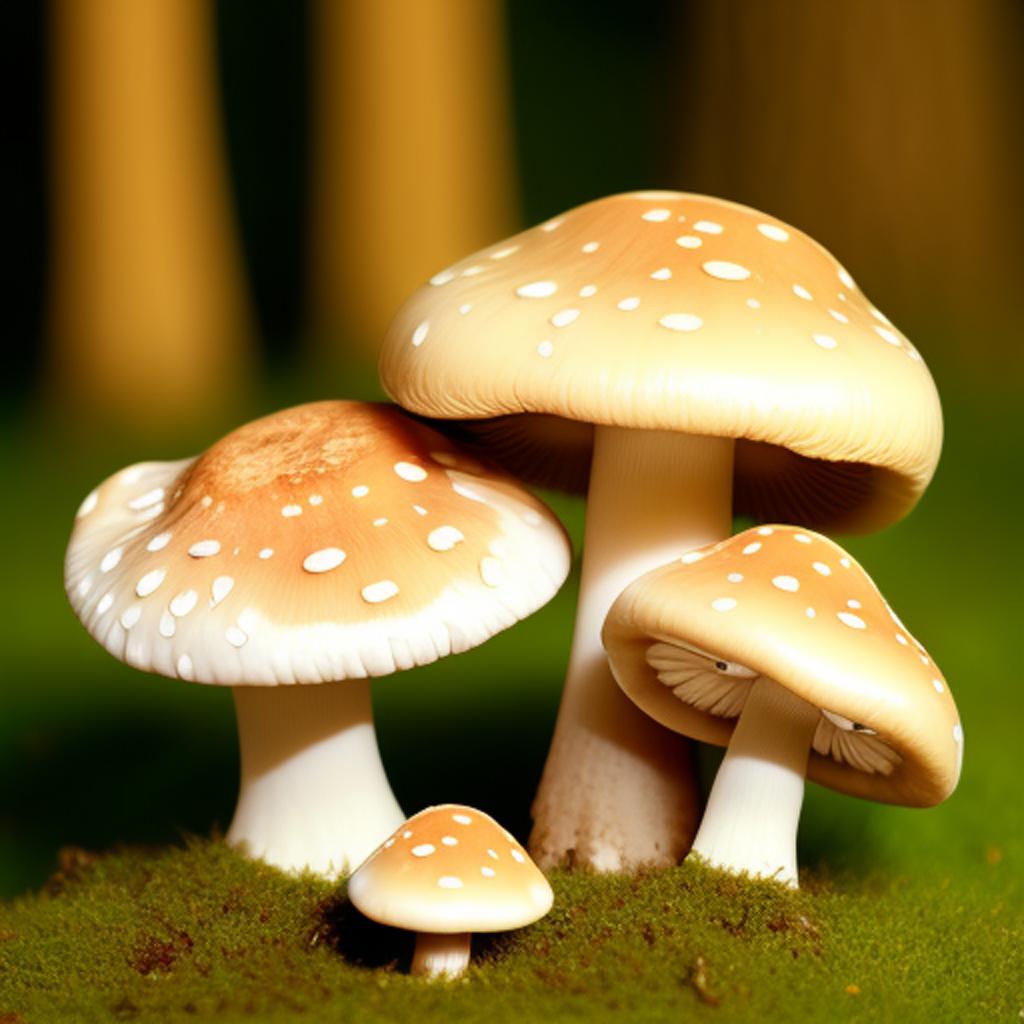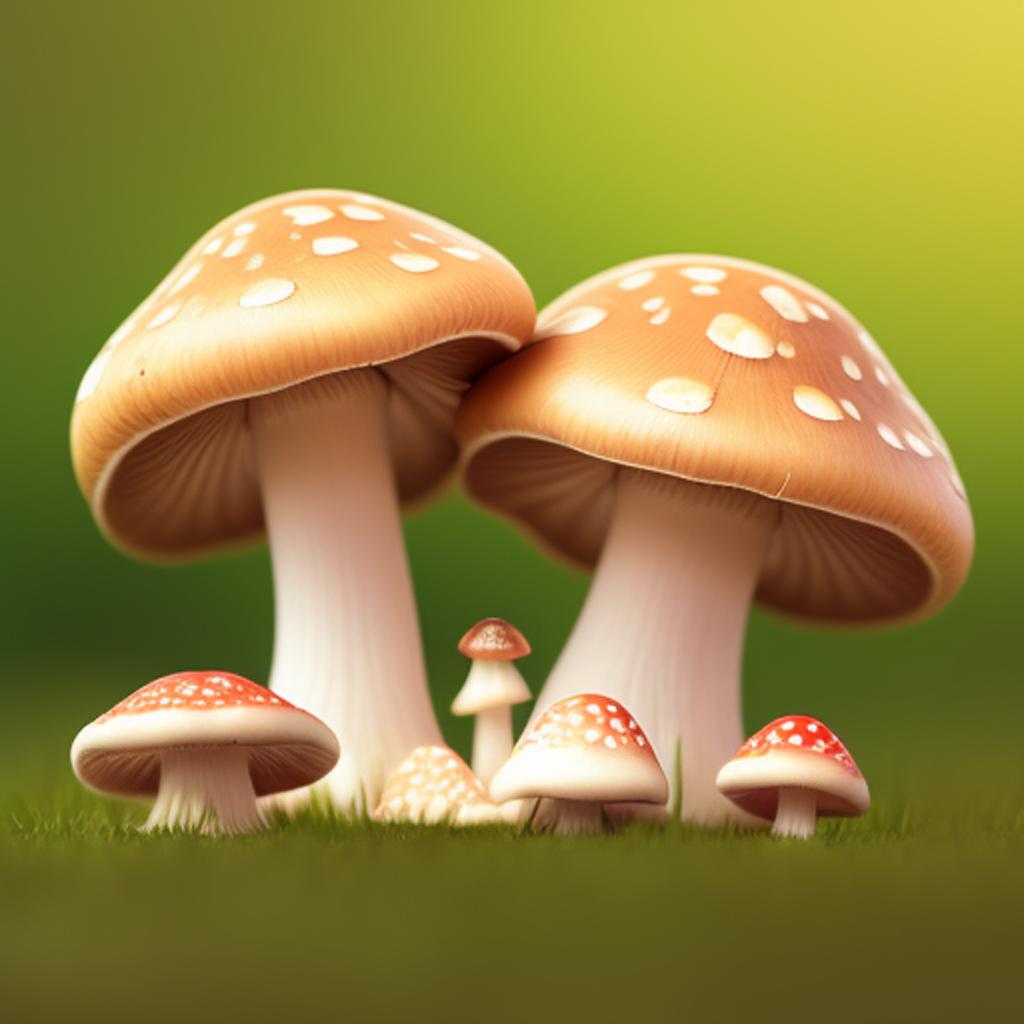Welcome to our blog post where we delve into the fascinating world of mushrooms. Today, we aim to uncover the truth about whether any poisonous mushrooms bruise blue. From understanding what bruising in mushrooms entails to exploring different types of poisonous mushrooms and identifying their characteristics, this article is your ultimate guide. So let’s embark on this journey together and separate fact from fiction when it comes to mushroom bruising!
What is bruising in mushrooms?
Bruising refers to the discoloration that occurs when pressure is applied to a mushroom, causing the flesh to turn blue. This phenomenon is common among certain species of boletes, which belong to the order Boletales. However, it’s important to note that not all mushrooms that bruise blue are poisonous, and vice versa. To accurately identify whether a mushroom is toxic or not, it’s necessary to consider multiple factors such as its appearance, habitat, and odor.
Definition of bruising
Mechanism behind mushroom bruising:
One fascinating fact about bruised mushrooms is that their color changes from white or yellow to blue due to a compound called laccase reacting with oxygen in the air.
When mushrooms are handled or damaged, the cells within their flesh rupture, releasing enzymes and chemicals. This process is known as bruising. In boletales mushrooms, including boletes, bruising occurs due to the presence of a compound called laccase. Laccase reacts with oxygen in the air and causes a color change from white or yellow to blue.
Visual signs of bruised mushrooms:
Bruised mushrooms display distinct visual cues that can help identify them. One common indicator is a blue discoloration on the cap, stem, or flesh of the mushroom. However, it’s important to note that not all types of poisonous mushrooms exhibit this trait. Therefore, solely relying on color changes may not be sufficient to determine if a mushroom is toxic.
Chemical changes during bruising:
During the process of bruising in mushrooms like boletes found in boletales family fungi groupi there are chemical transformations taking place beneath the surface. The enzyme laccase interacts with phenolic compounds present in these species leading to oxidation reactions which result in production of brown pigments such as melanin compounds causing visible color shifts from white/yellowish colors towards bluish hues
Factors causing bruising
Impact of physical pressure on mushrooms can cause bruising, resulting in discoloration. Mushrooms are delicate and prone to damage when handled roughly or subjected to external force. Additionally, environmental conditions such as humidity and temperature can influence the likelihood of bruising. Enzymes also play a significant role in the development of bruises, as they break down cell walls and release compounds that contribute to discoloration. To avoid bruising, it is important to handle mushrooms with care and create optimal environmental conditions for their storage and transportation.
Types of poisonous mushrooms
Common poisonous mushrooms come in a variety of types, each with its own distinct characteristics. While some species may bruise blue when damaged or handled, this trait is not exclusive to all poisonous mushrooms. It’s important to be cautious and rely on other identifying features, such as the shape and color of the cap, gills, or stem, when determining if a mushroom is toxic or safe for consumption. Always consult an expert or reference reliable sources before attempting to identify wild mushrooms.
Distinctive features of poisonous mushrooms go beyond just their potential to cause harm. These fungi often exhibit unique physical attributes that can help differentiate them from non-toxic varieties. Some common indicators include vibrant colors like bright reds or yellows, foul odors resembling rotting meat or chemicals, slimy textures on the cap surface or stem base, and unusual growth patterns such as clusters or rings. Remember that relying solely on these features is not enough; thorough knowledge and proper identification are crucial when dealing with potentially toxic mushrooms.
By understanding the variations within different species and recognizing key distinguishing traits associated with poisonous mushrooms, it becomes easier to navigate the complexities of mushroom identification while ensuring our safety in nature’s diverse realm.
Common poisonous mushrooms
Amanita phalloides, commonly known as the Death Cap mushroom, is one of the most toxic and deadly mushrooms. Its distinctive greenish-yellow cap and white gills make it easily identifiable. Ingesting this mushroom can lead to severe liver damage or even death.
Galerina marginata, also known as Deadly Galerina, is another highly poisonous mushroom. It has a small brown cap with a distinct ring on its stem. Consumption of this mushroom can cause organ failure and neurological symptoms.
Inocybe spp., collectively referred to as Fibercap Mushrooms, are another group of poisonous mushrooms. They have various colors and shapes but share a common characteristic – their fibrous caps that resemble fibers sticking out from the surface. These mushrooms contain toxins that can cause gastrointestinal distress and other harmful effects.
It is important to note that these mushrooms should never be consumed or handled without proper knowledge and expertise in mycology.
Distinctive features of poisonous mushrooms
- Coloration and shape: Poisonous mushrooms exhibit a wide range of colors and shapes, from vibrant reds to earthy browns. Their distinct hues can serve as a warning sign to potential foragers.
- Presence of veil remnants: Many poisonous mushrooms retain remnants of their veil, a protective tissue that covers the gills when they are young. This feature can help distinguish them from edible counterparts.
- Spore color: Another characteristic feature is the spore color. While some poisonous mushrooms have white or cream-colored spores, others boast unique shades such as black, purple, or green.
As mushroom enthusiasts navigate the realm of fungi identification and foraging practices, these distinguishing features become crucial in differentiating between toxic varieties and safe alternatives.
Do any poisonous mushrooms bruise blue?

The answer is yes, there are some poisonous mushrooms that do exhibit a blue bruising reaction. One example is the infamous Death Cap mushroom (Amanita phalloides), which contains deadly toxins and often shows a distinctive bluish discoloration when injured or handled. Another example is the Blue Staining Bolete (Gyroporus cyanescens), a toxic mushroom that turns blue upon bruising due to chemical reactions within its cells. It’s important to remember that while some poisonous mushrooms may bruise blue, not all blue-bruising mushrooms are necessarily toxic, so proper identification by an expert mycologist is crucial for safe consumption.
Overview of bruising in mushrooms
Mushroom bruising refers to the discoloration or darkening of a mushroom’s flesh when it is injured or handled. It is caused by the oxidation of certain compounds, resulting in color changes ranging from blue to brown. Identifying mushroom bruises involves carefully observing any color change that occurs after gentle pressure or injury to the cap, stem, or gills.
The causes of mushroom bruising can vary and may include physical damage during harvesting, handling, or transportation. Other factors such as exposure to air and light can also contribute to bruising. To identify mushroom bruises accurately, one must pay attention not only to visible discoloration but also consider any unusual odors that may accompany it.
Examples of poisonous mushrooms that bruise blue
Amanita muscaria, commonly known as the fly agaric, is a poisonous mushroom that displays blue staining when bruised. This distinct characteristic serves as a warning sign for its toxicity and should be avoided at all costs.
Psilocybe cubensis, also referred to as magic mushrooms, exhibits a bluish hue when bruised. While some species of Psilocybe are non-toxic and used in recreational purposes due to their hallucinogenic properties, it is crucial to exercise caution in identifying the specific species before consumption.
Inocybe geophylla var. lilacina is another dangerous mushroom that bruises blue upon contact. Its vivid coloration may mistakenly lure foragers into thinking it is safe to consume; however, this species can cause severe gastrointestinal symptoms and even organ failure if ingested.
These examples highlight the importance of knowing how different poisonous mushrooms react when bruised or damaged. It’s essential always to consult an expert or rely on reputable sources for accurate identification before engaging with wild mushrooms in any capacity.
Identifying characteristics of poisonous mushrooms

While some poisonous mushrooms do bruise blue, it is not a foolproof identifying characteristic. There are many other features to consider when trying to determine if a mushroom is poisonous or not. These include the color and texture of the cap, the presence of gills or pores underneath, and any distinctive smells or tastes. It is crucial to rely on multiple identifying characteristics rather than solely relying on bruising color.
When attempting to identify mushrooms, it is essential to exercise caution and follow proper measures. Never consume a wild mushroom unless you are absolutely certain about its edibility. Consult with an experienced mycologist or utilize reliable field guides for accurate identification. Remember that misidentifying a poisonous mushroom can have severe health consequences, so always err on the side of caution when in doubt
Other identifying features apart from bruising
Gill color and attachment, stem texture and shape, and the presence of a ring or volva are important identifying features apart from bruising that can help differentiate poisonous mushrooms. Pay attention to these characteristics when examining mushrooms for potential toxicity.
- Gill color and attachment: Look closely at the gills underneath the cap. Note their color, which can vary from white to various shades of yellow, pink, brown, or even black. Also observe how they attach to the stalk. Some mushrooms have free gills that do not touch the stem at all.
- Stem texture and shape: Examine the texture of the mushroom’s stem. It can be smooth, fibrous (like string), scaly, or covered in a powdery substance known as a bloom. Additionally, note if it is hollow or solid and whether it tapers towards its base.
- Presence of a ring or volva: Check for any structures around the stem such as rings or volvas (cup-like sacs) that may still be attached to some species after development.
By carefully considering these characteristics along with bruising information, you’ll gain more confidence in correctly identifying edible mushrooms while avoiding potentially toxic ones.
Cautionary measures for mushroom identification
- Consulting reliable field guides or experts: It is crucial to seek guidance from trustworthy sources such as experienced mycologists or reputable field guides when identifying mushrooms. Their expertise can help avoid potentially dangerous mistakes.
- Avoiding consumption without proper knowledge: Never consume any mushroom unless you are absolutely certain of its identity and safety. Even a small mistake in identification could lead to severe illness or even death.
- Taking spore prints for further confirmation: Spore prints can be a useful tool in the identification process, helping to determine the color and pattern of a mushroom’s spores. This additional step adds another layer of certainty before consuming or handling any unknown fungi.
Is there an easy way to identify mushrooms that bruise blue and are poisonous?

Mushroom identification can be a challenging task, especially when it comes to distinguishing between edible and poisonous varieties. Among the various characteristics used in identification, the ability of certain mushrooms to bruise blue is a notable indicator of potential toxicity.
Understanding Mushroom Bruising:
When a mushroom is damaged or undergoes physical contact, some species undergo a chemical reaction resulting in a color change, commonly referred to as bruising. This bruising phenomenon occurs due to the oxidation of specific compounds in the mushroom’s flesh, leading to the formation of bluish or bluish-green pigments. While not all blue-bruising mushrooms are toxic, it is crucial to exercise caution as some highly poisonous mushrooms exhibit this characteristic.
Identifying Poisonous Blue-Bruising Mushrooms:
1. Psilocybin Mushrooms (Psilocybe spp.): Psilocybin-containing mushrooms, often referred to as “magic mushrooms,” are a group known for their psychoactive properties. These mushrooms bruise blue due to the oxidation of psilocin, a compound responsible for their hallucinogenic effects. As a general rule of thumb, it is best to avoid consuming any wild mushroom that bruises blue, as it is difficult to differentiate between the various species.
2. Inocybe spp.: Many species in the Inocybe genus have blue-bruising characteristics and are highly toxic. These mushrooms contain a compound called muscarine, which can cause severe gastrointestinal symptoms and even organ failure if ingested.
3. Cortinarius spp.: The Cortinarius genus includes numerous species that bruise blue and are poisonous. Some of these mushrooms contain toxins called orellanines, which can cause kidney damage if consumed. It is important to note that not all Cortinarius mushrooms bruise blue, so other identifying characteristics should also be taken into consideration.
4. Gymnopilus spp.: Certain species within the Gymnopilus genus bruise blue and are known to contain high levels of psilocybin, similar to Psilocybe mushrooms. These mushrooms are often found growing on wood and can cause hallucinogenic effects if ingested.
5. Stropharia spp.: Some species in the Stropharia genus bruise blue and are considered poisonous. These mushrooms contain the compound psilocybin, which can lead to hallucinations and other psychoactive effects.
Cautionary Measures:
1. Never consume any mushroom unless you are 100% certain of its identification. If you are not an experienced mycologist, it is best to consult with an expert or refer to reliable identification resources.
2. Avoid foraging for mushrooms in areas with pollution or contamination, as the mushrooms can absorb and concentrate harmful substances from their environment.
3. When handling blue-bruising mushrooms, wear gloves to prevent any potential skin irritation or allergic reactions.
4. Educate yourself on the distinguishing characteristics of poisonous blue-bruising mushrooms, such as their specific habitat, cap shape, gill color, and spore print color. This knowledge will help you make more accurate identifications in the field.
5. It is always safer to err on the side of caution and avoid consuming any mushroom that bruises blue, as it is difficult to determine the exact species and its toxicity level without proper expertise.
6. If you suspect mushroom poisoning, seek immediate medical attention. Take a sample of the mushroom in question to the healthcare provider to aid in identification and treatment.
Conclusion:
Blue-bruising mushrooms can be fascinating to observe, but it is important to remember that not all of them are safe to consume. The risk of toxicity outweighs the curiosity, and therefore, it is crucial to exercise caution when encountering mushrooms that exhibit this characteristic. Consult with experts, use reliable identification resources, and be aware of the potential dangers associated with consuming wild mushrooms. Your health and safety should always be the top priority when dealing with mushrooms in nature.
What are the consequences of ingesting a mushroom that bruises blue?
Mushrooms are a diverse group of organisms, and while most are harmless, some can be toxic or even deadly if ingested. One noteworthy characteristic to identify potentially toxic mushrooms is their ability to bruise blue.
1. Identification and Common Blue-Bruising Mushrooms:
Certain species of mushrooms, including the commonly known Psilocybe genus (psilocybin mushrooms), have a distinct characteristic of bruising blue when handled or damaged. This discoloration is due to the oxidation of a compound called psilocin.
2. Psychological and Physiological Effects:
Mushrooms containing psilocin, such as psilocybin mushrooms, can induce hallucinogenic effects when ingested. The consequences of consuming these blue-bruising mushrooms are primarily associated with the presence of psilocin, which acts on serotonin receptors in the brain. The effects can vary significantly depending on the dosage, individual sensitivity, and set and setting.
3. Positive Effects:
When used responsibly and in controlled environments, psilocybin mushrooms may offer potential therapeutic benefits. Studies have suggested that they could assist in the treatment of mental health conditions like depression, anxiety, and PTSD. Nonetheless, it is crucial to emphasize that medical or therapeutic use of these mushrooms should only occur under the guidance of a qualified professional.
4. Potential Risks:
While psilocybin mushrooms may have potential therapeutic benefits, it is important to recognize and be cautious of the risks associated with consuming them. These risks include:
a. Misidentification: Mistakenly consuming a toxic mushroom that bruises blue can have severe consequences. It is crucial to properly identify mushrooms before consuming them, as there are poisonous species that also display this characteristic.
b. Unexpected Reactions: Individuals may have unexpected reactions to psilocybin mushrooms, especially if they have underlying medical conditions or are taking other medications. These reactions can include severe anxiety, panic attacks, or even psychotic episodes.
c. Negative Psychological Effects: The hallucinogenic effects of psilocybin mushrooms can be intense and overwhelming for some individuals. They may experience a bad trip, which can involve anxiety, paranoia, and a loss of touch with reality.
d. Physical Side Effects: Consuming psilocybin mushrooms can also lead to physical side effects such as nausea, vomiting, dizziness, increased heart rate, and muscle weakness.
e. Legal Consequences: The possession, cultivation, or distribution of psilocybin mushrooms is illegal in many countries and can result in legal repercussions.
Conclusion:
Ingesting mushrooms that bruise blue should not be taken lightly. While they may have potential therapeutic benefits, the risks associated with consuming these mushrooms are significant. Proper identification, consultation with experts, and responsible use are essential for ensuring your health and safety. If you are considering using psilocybin mushrooms for therapeutic purposes, it is important to seek guidance from a qualified professional who can provide proper dosage, set, and setting. Additionally, always be aware of the legal implications in your country before engaging in any activities related to psilocybin mushrooms.
Remember, your health and well-being should always be the top priority. If you have any concerns or questions about the use of psilocybin mushrooms, consult with a healthcare professional who can provide you with accurate information and guidance.
Conclusion
In conclusion, blue bruising is a characteristic commonly associated with edible mushrooms. However, it is important to note that not all poisonous mushrooms exhibit this trait. Therefore, relying solely on the presence of blue bruising as an indicator of edibility can be misleading and potentially dangerous. Proper identification and caution are essential when foraging for wild mushrooms to ensure your safety and enjoyment of this unique culinary experience.
